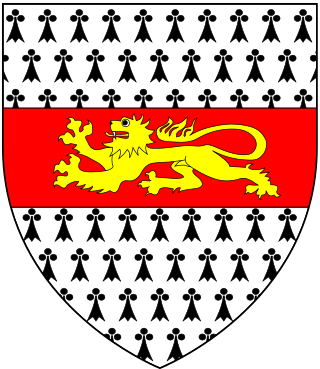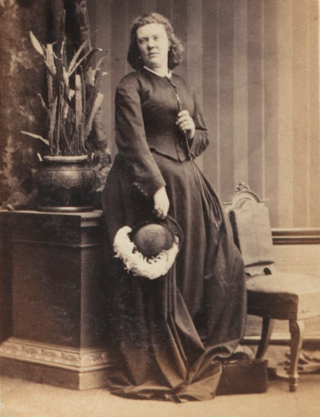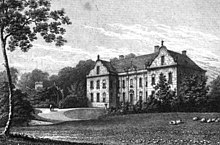
Viscount Cobham is a title in the Peerage of Great Britain that was created in 1718. Owing to its special remainder, the title has passed through several families. Since 1889, it has been held by members of the Lyttelton family.

Earl of Huntingdon is a title which has been created several times in the Peerage of England. The medieval title was associated with the ruling house of Scotland.

Marquess of Headfort is a title in the Peerage of Ireland. It was created in 1800 for Thomas Taylour, 2nd Earl of Bective.

Marquess of Ely, of the County of Wexford, is a title in the Peerage of Ireland. It was created in 1800 for Charles Loftus, 1st Earl of Ely. He was born Charles Tottenham, the son of Sir John Tottenham, 1st Baronet, who had been created a baronet, of Tottenham Green in the County of Wexford, in the Baronetage of Ireland in 1780, by Elizabeth, daughter of Nicholas Loftus, 1st Viscount Loftus, sister and heiress of Henry Loftus, 1st Earl of Ely. In 1783 he succeeded to the Loftus estates on the death of his maternal uncle the Earl of Ely and assumed the same year by Royal licence the surname of Loftus in lieu of his patronymic. In 1785 he was raised to the Peerage of Ireland as Baron Loftus, of Loftus Hall in the County of Wexford. It was sold by the family in 1917 and is today owned by the Quigley family.

Marquess of Londonderry, of the County of Londonderry, is a title in the Peerage of Ireland.

Baron Hastings is a title that has been created three times. The first creation was in the Peerage of England in 1290, and is extant. The second creation was in the Peerage of England in 1299, and became extinct on the death of the first holder in c. 1314. The third creation was in the Peerage of England in 1461, and has been in abeyance since 1960.

Marquess of Hastings was a title in the Peerage of the United Kingdom. It was created on 6 December 1816 for Francis Rawdon-Hastings, 2nd Earl of Moira.

Earl of Carysfort was a title in the Peerage of Ireland. It was created in 1789 for John Proby, 2nd Baron Carysfort. The Proby family descended from Sir Peter Proby, Lord Mayor of London in 1622. His great-great-grandson John Proby represented Huntingdonshire and Stamford in the House of Commons. His son and namesake John Proby was a Whig politician and notably served as a (civilian) Lord of the Admiralty. In 1752 he was raised to the Peerage of Ireland as Baron Carysfort, of Carysfort in the County of Wicklow. He was succeeded by his son, the second Baron. He was also a politician and was created Earl of Carysfort in the Peerage of Ireland in 1789. In 1801 he was further honoured when he was made Baron Carysfort, of the Hundred of Norman Cross in the County of Huntingdon, in the Peerage of the United Kingdom, which gave him a seat in the British House of Lords. His eldest son and heir apparent, William Proby, Lord Proby, predeceased him.

Willesley is a village and former civil parish, now in the parish of Ashby-de-la-Zouch, in the North West Leicestershire district, in the county of Leicestershire, England. It was originally in Derbyshire. Willesley Hall was the home of the Abney and later the Abney-Hastings family. In 1931 the parish had a population of 80.

Edith Maud Rawdon-Hastings, 10th Countess of Loudoun was a Scottish peer. She died aged 40 after caring for Rowallan Castle. Sir George Gilbert Scott designed an Eleanor Cross style monument to her which was erected in Ashby de la Zouch.
Baron Donington, of Donington Park in the County of Leicester, was a title in the Peerage of the United Kingdom. It was created on 4 May 1880 for Charles Frederick Abney-Hastings. Born Charles Frederick Clifton, he was the widower of Edith Mary Abney-Hastings, 10th Countess of Loudoun. He and his wife had in 1859 assumed by Royal licence the surname of Abney-Hastings on succeeding to the Abney-Hastings estates after the death of his wife's kinsman Sir Charles Abney-Hastings, 2nd Baronet in 1858. They were both succeeded by their eldest son Charles Edward Rawdon-Hastings, 11th Earl of Loudoun and 2nd Baron Donington. However, on his death in 1920 the titles separated. The Scottish earldom was inherited by his niece Edith, daughter of his second brother the Hon. Major Paulyn Francis Cuthbert Rawdon-Hastings. The barony of Donington, which could only be inherited by male heirs, passed to his third brother Gilbert Theophilus, who became the third Baron. He had four daughters but no sons, and on his death in 1927 the barony became extinct.
The Ashburnham Baronetcy, of Broomham in the County of Sussex, is a title in the Baronetage of England. It was created on 15 May 1661 for Denny Ashburnham, Member of Parliament for Hastings. He was the grandson of Adam Ashburnham, Member of Parliament for Winchelsea in 1592, who was the son of Laurence Ashburnham, and a descendant of Richard Ashburnham of Broomham, second son of Thomas Ashburnham, whose eldest son John was the ancestor of the Earls of Ashburnham. He was succeeded by his elder son, William, the second Baronet. He represented Hastings and Seaford in the House of Commons. He died childless in 1755 and was succeeded by his younger brother, Charles, the third Baronet. His son, William, the fourth Baronet, was Bishop of Chichester. On his death the title passed to his son, the fifth Baronet. He sat as Member of Parliament for Hastings.
British history provides several opportunities for alternative claimants to the English and later British Crown to arise, and historical scholars have on occasion traced to present times the heirs of those alternative claims.
General Sir Charles Hastings, 1st Baronet, GCH was a British Army officer.

Sir Charles Abney Hastings, 2nd Baronet of Willesley Hall, Derbyshire was both High Sheriff of Derbyshire and an MP for Leicester from 1826 to 1831.
Francis Hastings, Lord Hastings was the son of George Hastings, 4th Earl of Huntingdon and Dorothy Port. He married Sarah Harington, daughter of Sir James Harington and Lucy Sydney. They had five children:
Charles Edward Rawdon-Hastings, 11th Earl of Loudoun was a Scottish peer.
There have been two baronetcies created for members of the Hastings family headed by the Earl of Huntingdon, one in the Baronetage of England and one in the Baronetage of the United Kingdom. Both creations are extinct.
George Forbes, 5th Earl of Granard PC was an Anglo-Irish politician and peer.
Gilbert Theophilus Clifton Clifton-Hastings-Campbell, 3rd Baron Donington was a British peer and soldier.













